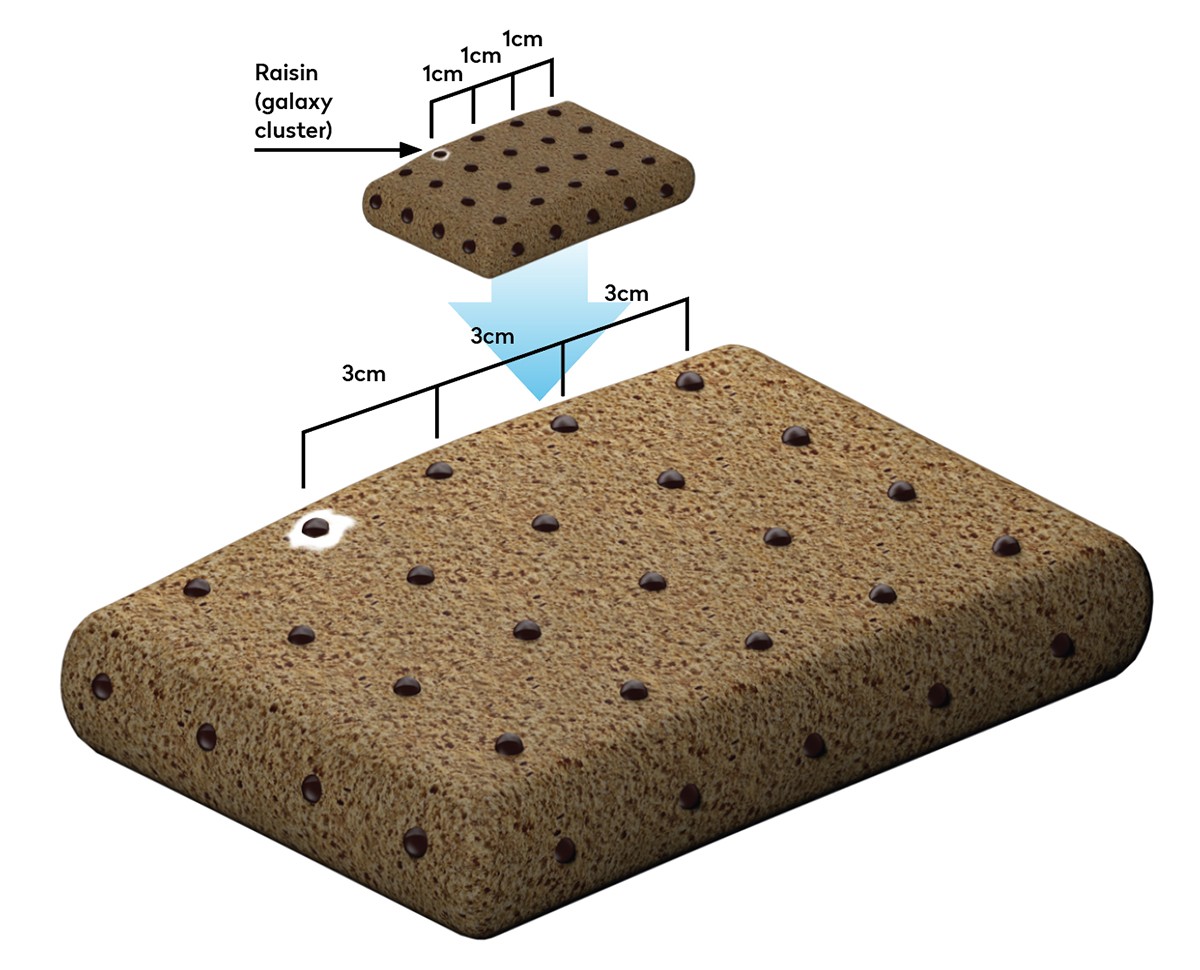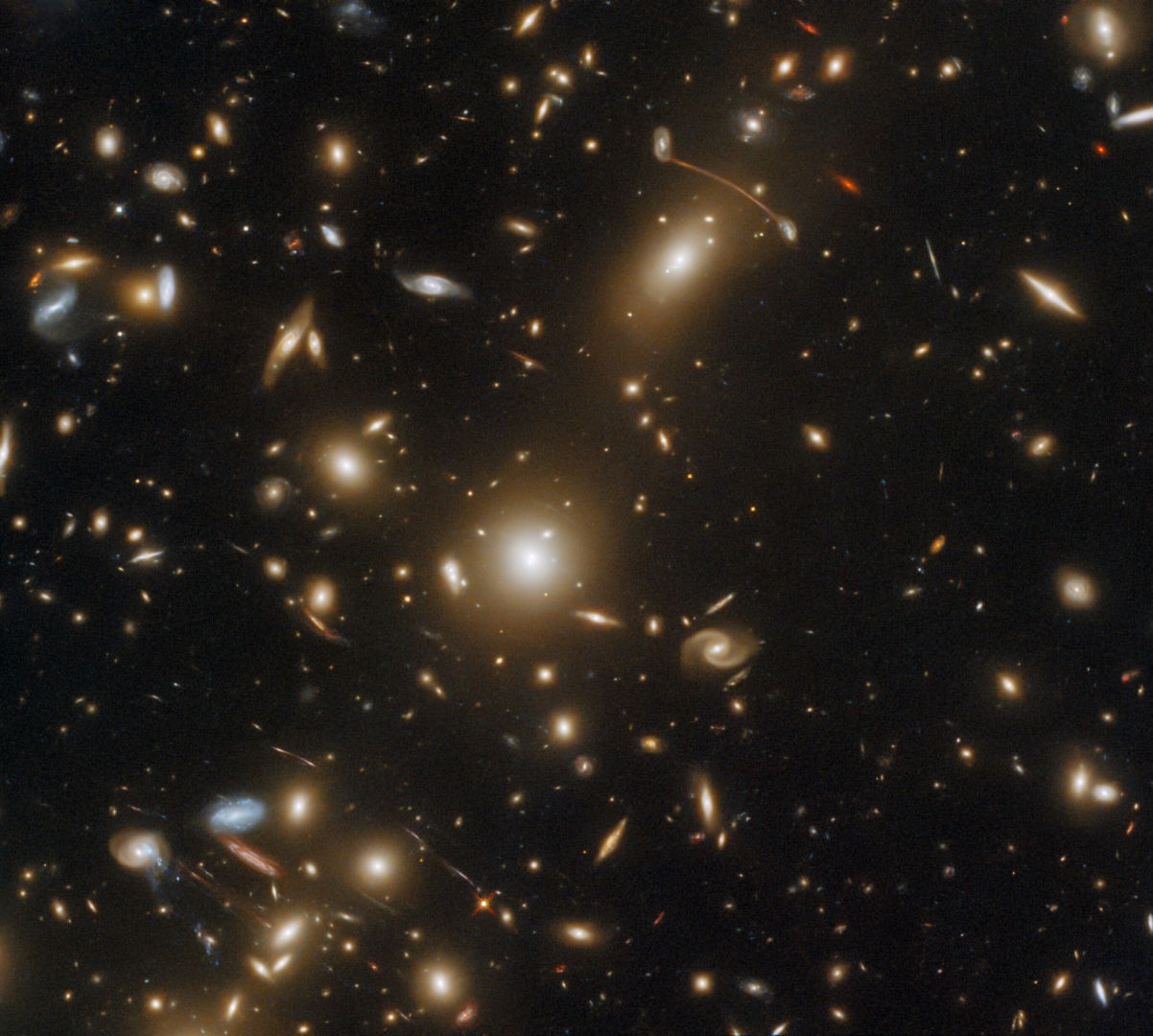Our observable universe stretches billions of light-years in every direction. Powerful telescopes reveal galaxies whose light has journeyed for over 10 billion years to reach Earth. This raises a fascinating question: if we see such ancient light from opposite ends of the cosmos, originating from shortly after the Big Bang (approximately 13.8 billion years ago), does this imply that the universe is expanding faster than light?
And if so, doesn’t that contradict Albert Einstein’s theory of relativity, which postulates the speed of light as an insurmountable limit?
The answer, surprisingly, is nuanced. To understand it, we need to delve deeper into the expansion of the universe itself.
The Expanding Universe: A Raisin Bread Analogy
The prevailing evidence confirms that the universe is expanding. Galaxies appear to be moving away from each other, with the distance between them constantly increasing. This phenomenon is observable through redshift, the stretching of light waves as objects move away from us.
However, it’s crucial to avoid picturing cosmic expansion as galaxies speeding through a pre-existing empty space. Instead, it is the very fabric of space that is expanding, carrying galaxies along with it.
A helpful analogy is a loaf of raisin bread rising in an oven. The raisins represent galaxies, and the dough represents space. As the dough expands during baking, the raisins move further apart, even though they themselves aren’t actively traveling through the dough.
 Raisin bread analogy for universe expansion: As bread bakes, the dough (space) expands, pushing the raisins (galaxies) further apart, but the raisins themselves don't change size.
Raisin bread analogy for universe expansion: As bread bakes, the dough (space) expands, pushing the raisins (galaxies) further apart, but the raisins themselves don't change size.
Therefore, even if galaxies remained stationary relative to their local space, their mutual distances would still increase due to the expansion of space itself. An infinite universe would be analogous to an infinitely large loaf of raisin bread, with the dough constantly pushing the raisins apart.
Expansion Velocity: A Matter of Scale
So, what about the speed of this expansion? Imagine two raisins starting 1 cm apart. If the loaf doubles in size within an hour, they will end up 2 cm apart. From the perspective of one raisin, the other appears to be moving away at 1 cm per hour. However, a raisin initially 3 cm away will end up at 6 cm, resulting in an apparent recession velocity of 3 cm per hour.
The same principle applies to galaxies. Nearby galaxies seem to recede at a slower rate than those farther away. Cosmic expansion doesn’t have a single, fixed velocity. Expressing it in kilometers per second requires specifying the distance being considered.
It is more meaningful to express the expansion velocity as a relative growth rate. Currently, cosmic distances increase by approximately 0.007% every million years.
Exceeding the Speed of Light?
So, does the universe expand faster than light? The answer depends on the scale.
 Galaxy Cluster Abel 1351, showcasing the vast distances between galaxies and galaxy clusters, highlighting the scale at which cosmic expansion occurs.
Galaxy Cluster Abel 1351, showcasing the vast distances between galaxies and galaxy clusters, highlighting the scale at which cosmic expansion occurs.
Consider two galaxies on opposite sides of the observable universe, separated by 20 billion light-years. At the current expansion rate, their distance will increase by 0.007% (1.4 million light-years) in one million years. This increase in distance is clearly faster than the speed of light.
This rate has varied slightly throughout the universe’s history. So, at extremely large distances, it’s accurate to say that the universe expands faster than light.
Einstein’s Relativity and Cosmic Expansion
However, this doesn’t contradict Einstein’s theory of relativity. Einstein’s speed limit applies to the motion of physical objects through space, from one location in the universe to another.
The expansion of space itself is not about objects moving through space. It is the stretching of space itself. Therefore, it is not constrained by the speed of light. Cosmic expansion operates under different rules. It represents the evolution of the universe’s geometry, not the velocity of objects moving within that geometry.
In conclusion, while galaxies don’t “travel” faster than light, the universe’s expansion causes the distance between extremely distant objects to increase at a rate exceeding the speed of light. This is not a violation of relativity, as the expansion of space is fundamentally different from the movement of objects through space.
